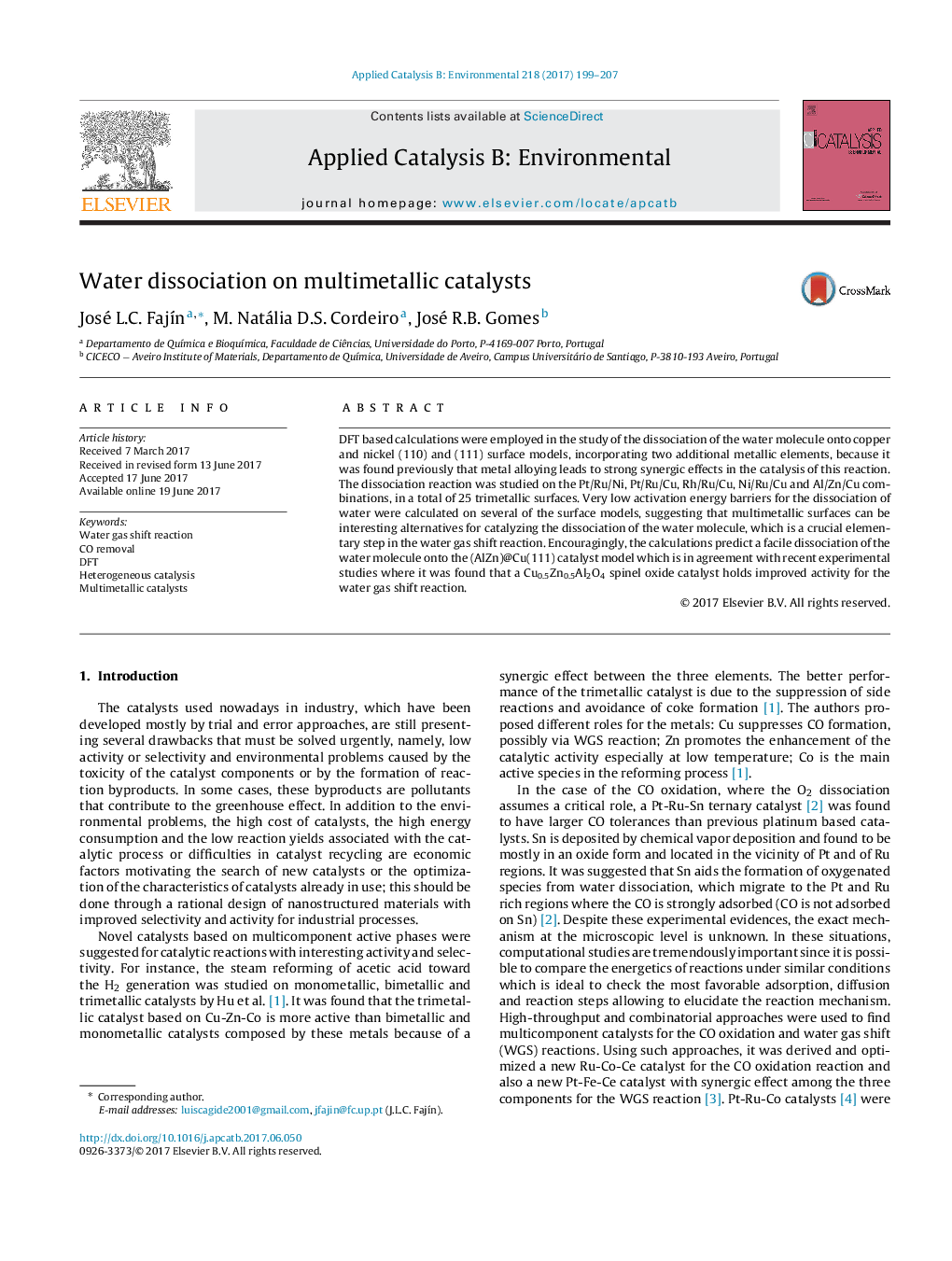| Article ID | Journal | Published Year | Pages | File Type |
|---|---|---|---|---|
| 6453719 | Applied Catalysis B: Environmental | 2017 | 9 Pages |
â¢Trimetallic surfaces present a high reactivity toward the water dissociation.â¢Al/Zn/Cu based catalysts should be highly reactive for the WGS reaction.â¢The predicted high activity of Al/Zn/Cu for the WGS reaction agrees with recent experimental evidences.â¢The co-adsorption energy of OH+H is a good descriptor for the water dissociation reaction on flat trimetallic surfaces.
DFT based calculations were employed in the study of the dissociation of the water molecule onto copper and nickel (110) and (111) surface models, incorporating two additional metallic elements, because it was found previously that metal alloying leads to strong synergic effects in the catalysis of this reaction. The dissociation reaction was studied on the Pt/Ru/Ni, Pt/Ru/Cu, Rh/Ru/Cu, Ni/Ru/Cu and Al/Zn/Cu combinations, in a total of 25 trimetallic surfaces. Very low activation energy barriers for the dissociation of water were calculated on several of the surface models, suggesting that multimetallic surfaces can be interesting alternatives for catalyzing the dissociation of the water molecule, which is a crucial elementary step in the water gas shift reaction. Encouragingly, the calculations predict a facile dissociation of the water molecule onto the (AlZn)@Cu(111) catalyst model which is in agreement with recent experimental studies where it was found that a Cu0.5Zn0.5Al2O4 spinel oxide catalyst holds improved activity for the water gas shift reaction.
Graphical abstractDownload high-res image (194KB)Download full-size image
